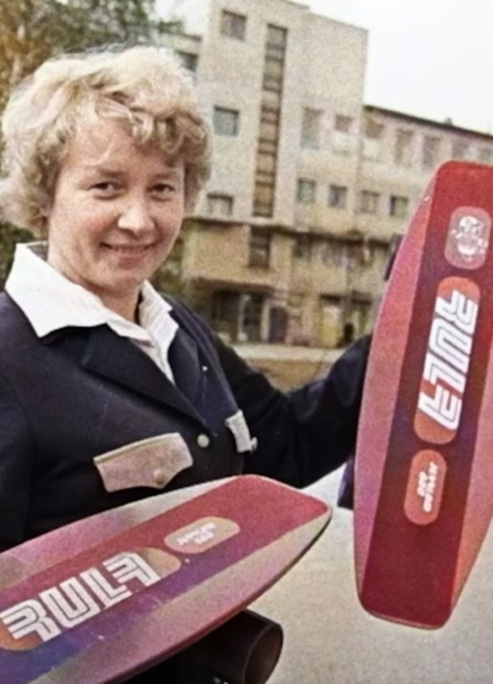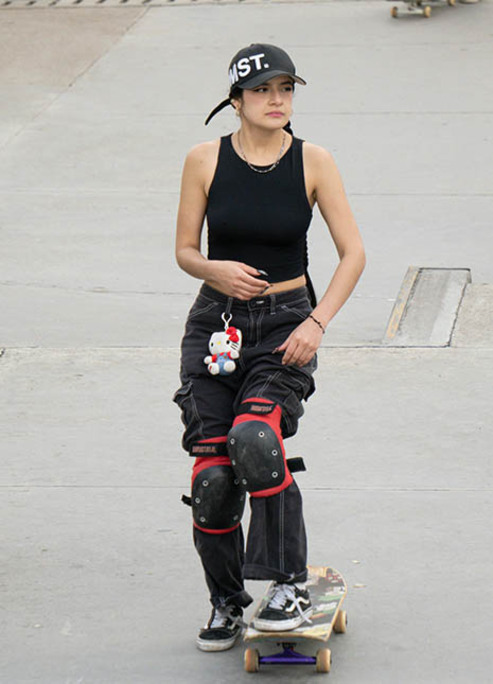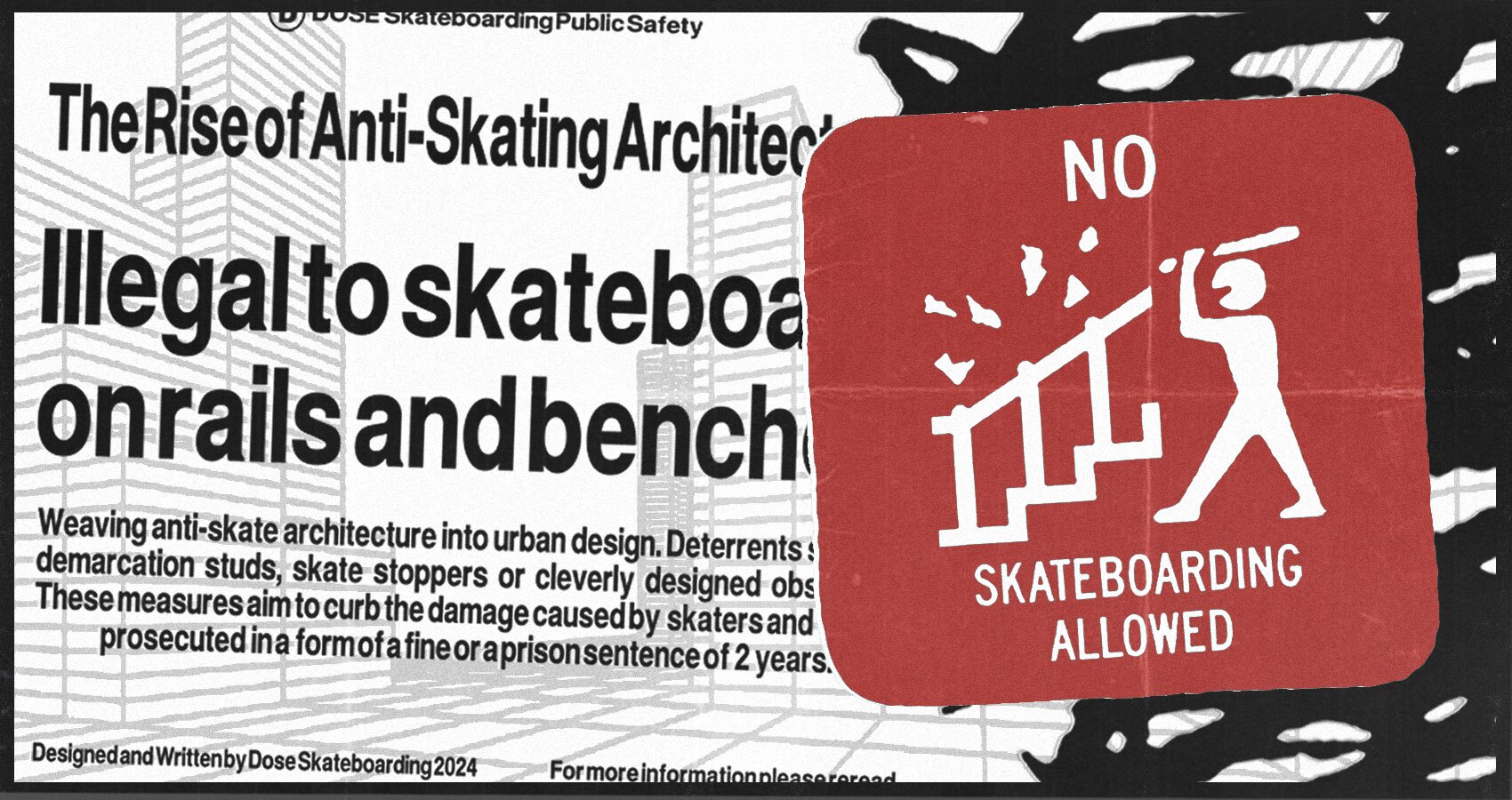
The Rise of Anti-Skating Architecture
The architecture of public spaces has changed over the past two decades to prevent certain activities. Those living in major cities have become familiar with “hostile architecture” - the addition of sloping surfaces, bumps and spikes to steps, ledges, and benches in order to deter sleeping and skateboarding.
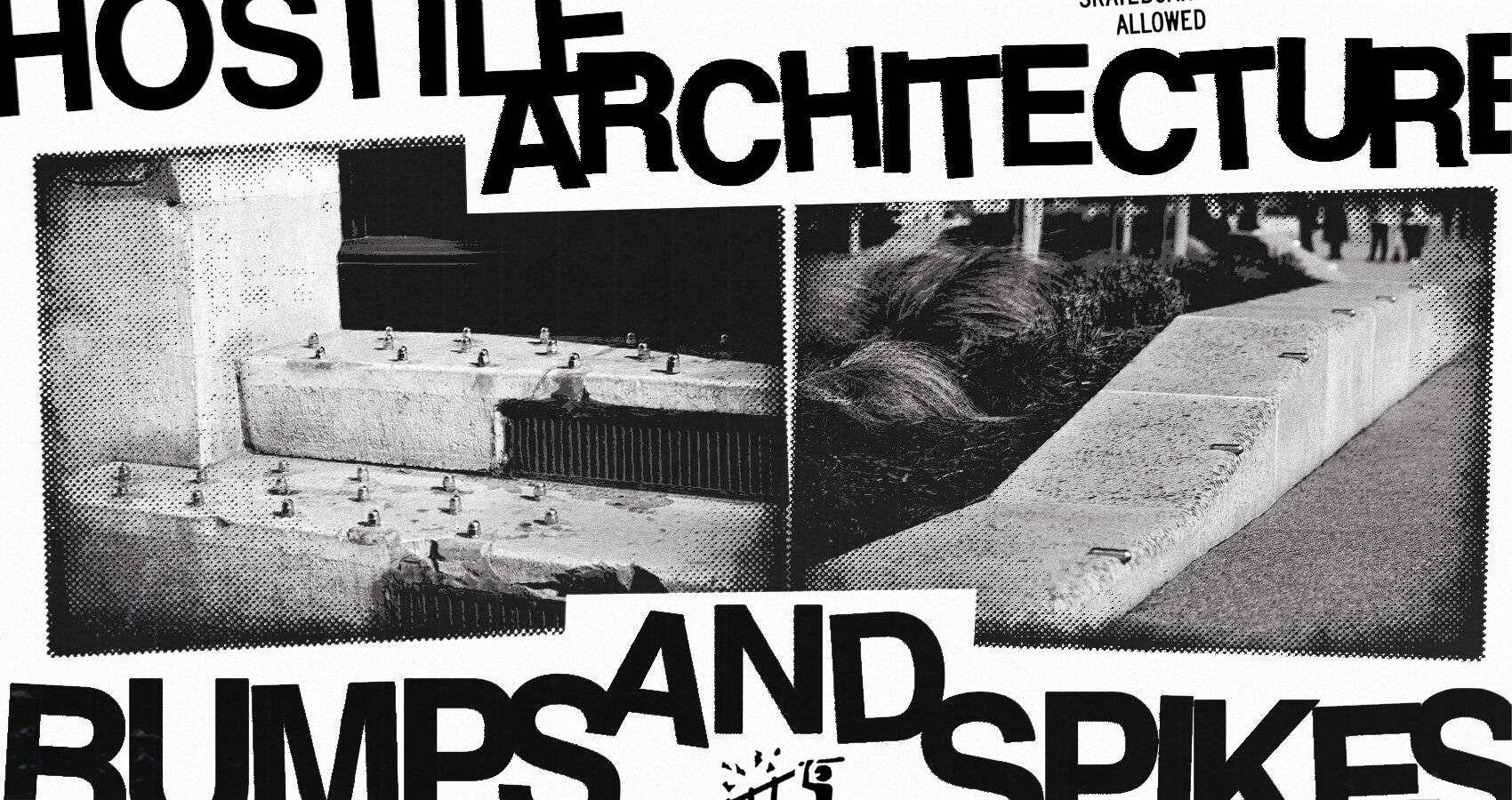
Anti-skate architecture has been used by cities and corporations alike to protect spaces from damage by skateboarders. Businesses began using it outside their buildings to protect spots against the wear and tear of skating after the millennium. Since then, the addition of skate-stoppers to ledges and railings began to proliferate, as did bumps at the top and bottom of stairs. Camden Council installed their award-winning concrete ’Camden Benches’ in the early 2010s, a design that discourages sleeping, skateboarding and drug dealing. A decade later, hostile architecture is part of the furniture of the city
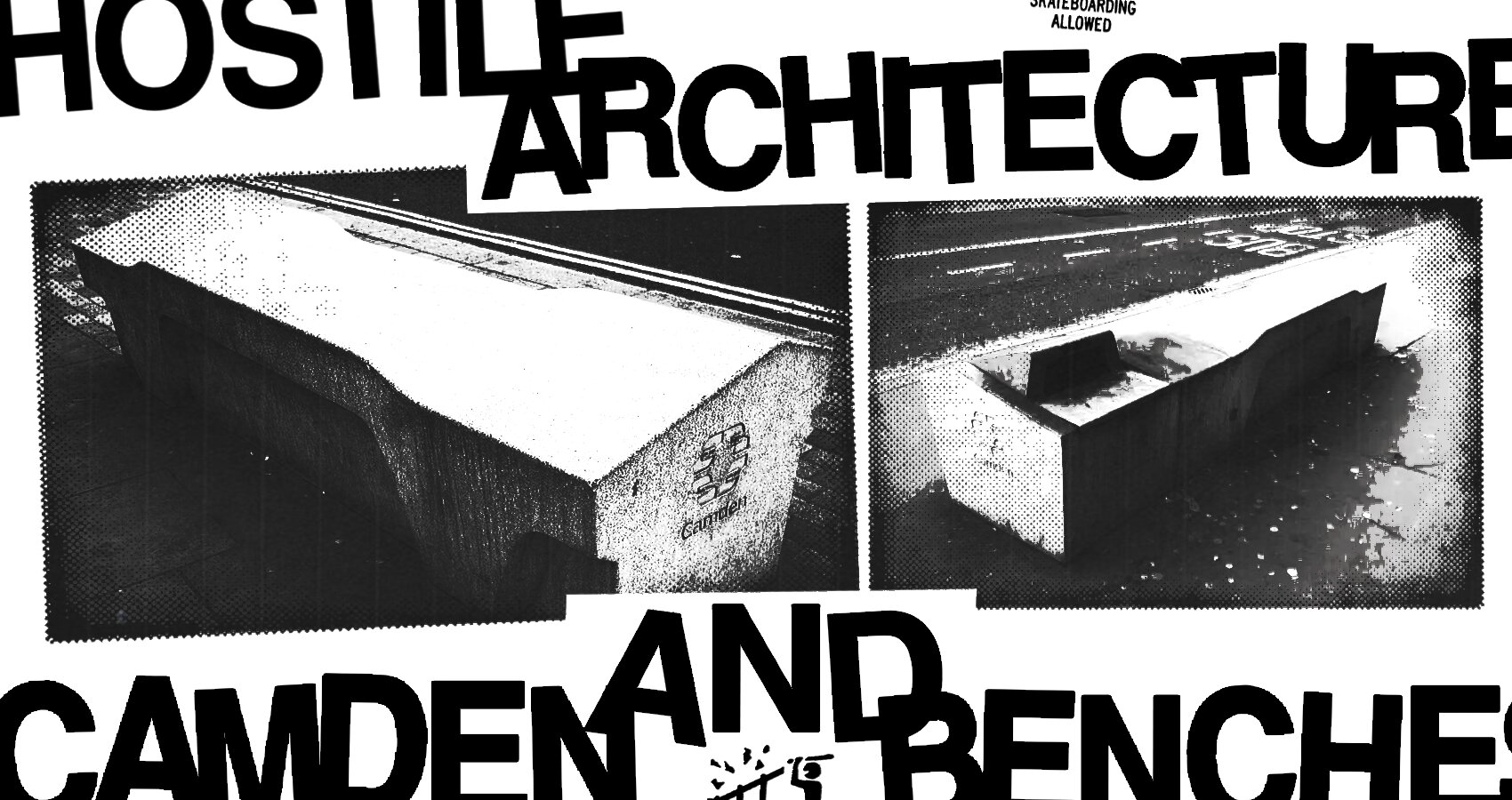
Iain Borden, an architectural historian, says this trend originated in 1990s urban design planning. The mentality of these planners pioneered the suggestion that "we are only republic citizens to the degree that we are either working or consuming goods directly."
"So it's OK, for example, to sit around as long as you are in a cafe or in a designated place where certain restful activities such as drinking a frappuccino should take place but not activities like busking, protesting or skateboarding.. everything becomes like a shopping mall."
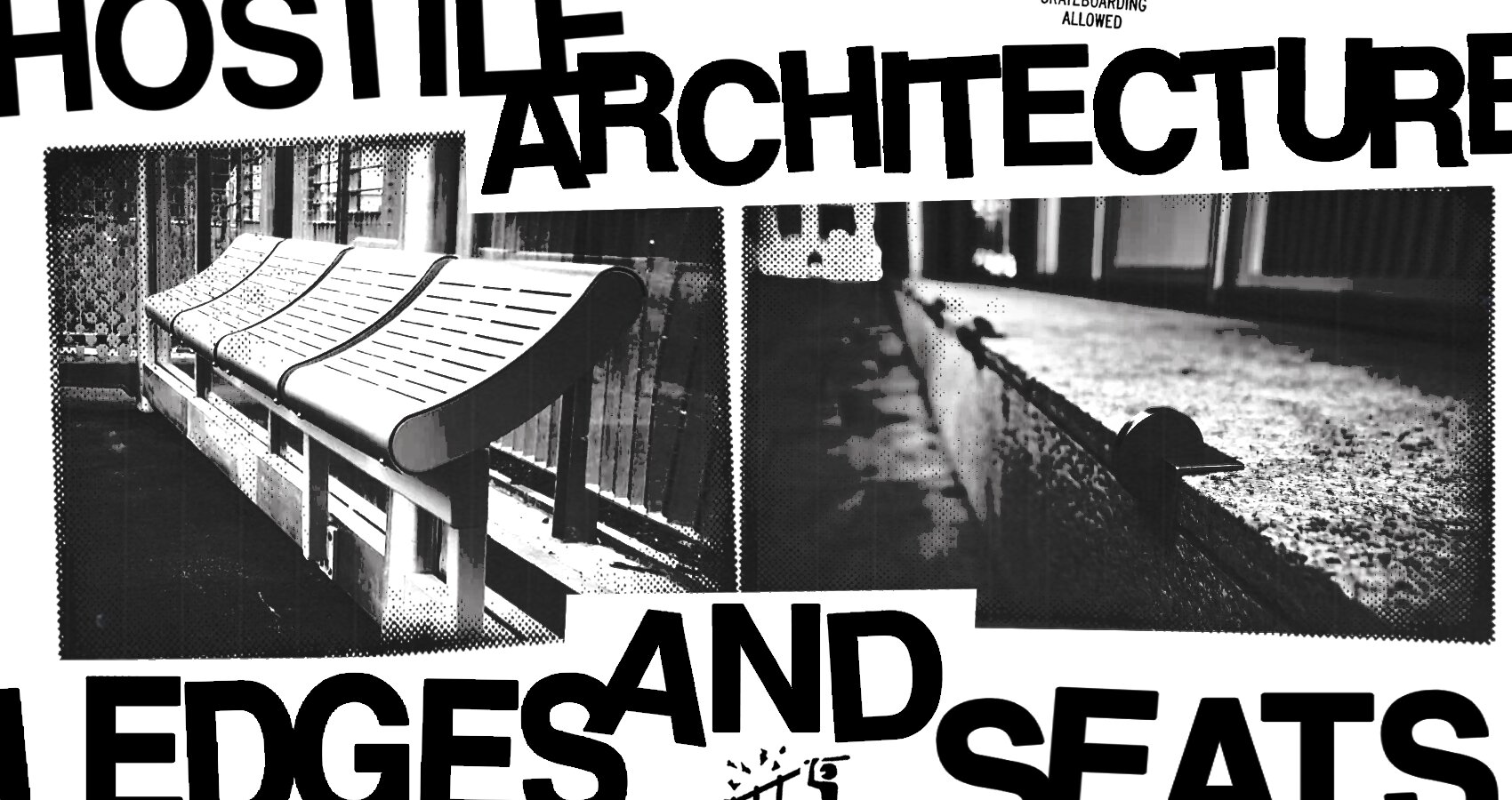
These hostile architectural designs reinforce the idea that public spaces are solely for consumerism. Non-profit activities - basically public socializing - is considered anti-social, a concept that has been identified as ironic by many sides, including skateboarders. These days, window ledges at ground level are being spiked to prevent sitting, and bus stops have angled seats to discourage loitering.
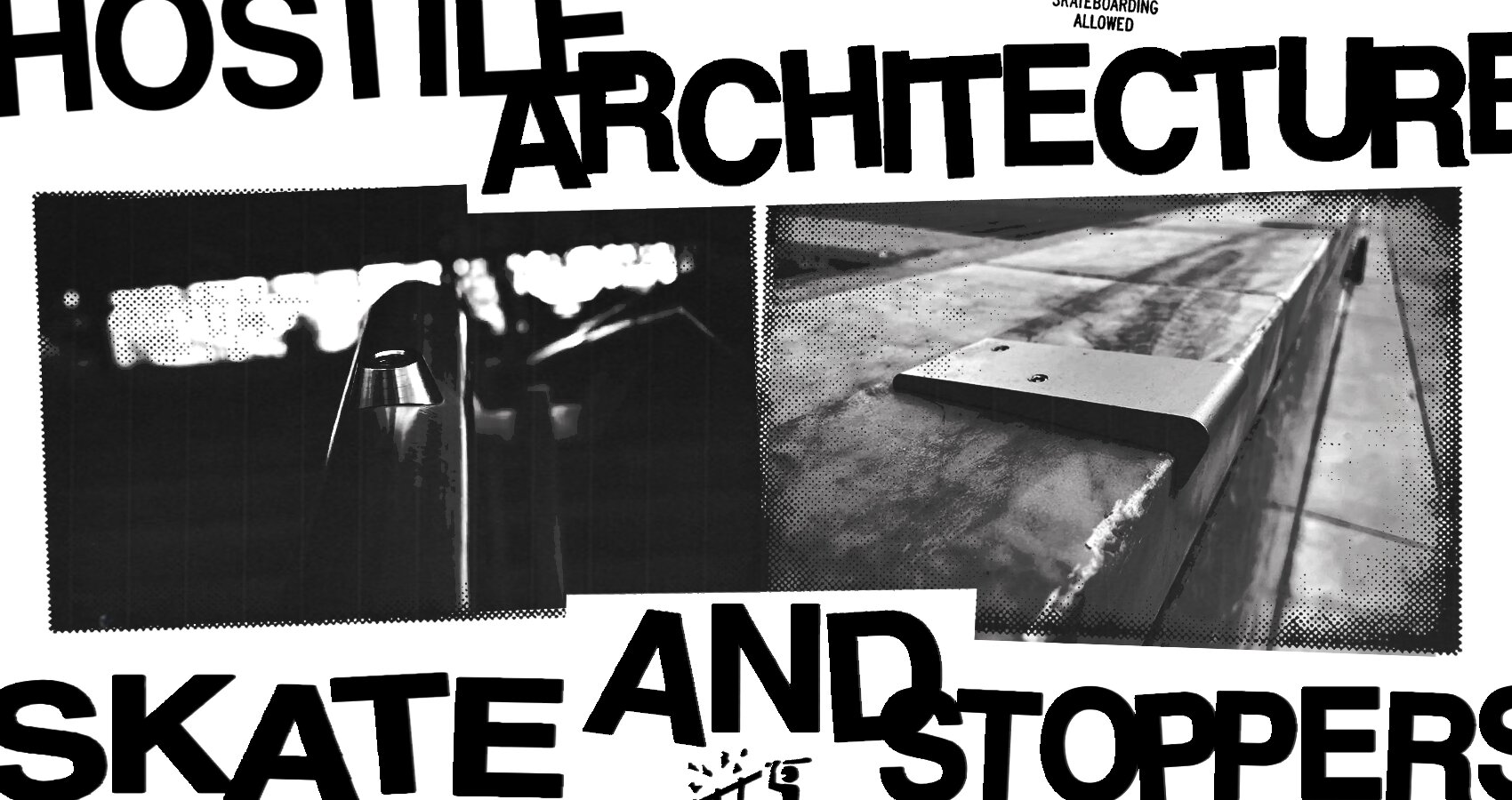
Public benches these days are usually divided by armrests, to prevent lying down. There is a link between the attitude that vulnerable people should have nowhere to be in public and the idea that skateboarders should not be allowed public space either. Both revolve around the idea that it is only consumers that deserve space. The message is clear, pass through on your way to your job, and then return home - If you want to skate, go to a park. Some skaters have put the fight into their own hands, removing skatestoppers with hacksaws. It is a question of ownership - who owns these public spaces anyway?


